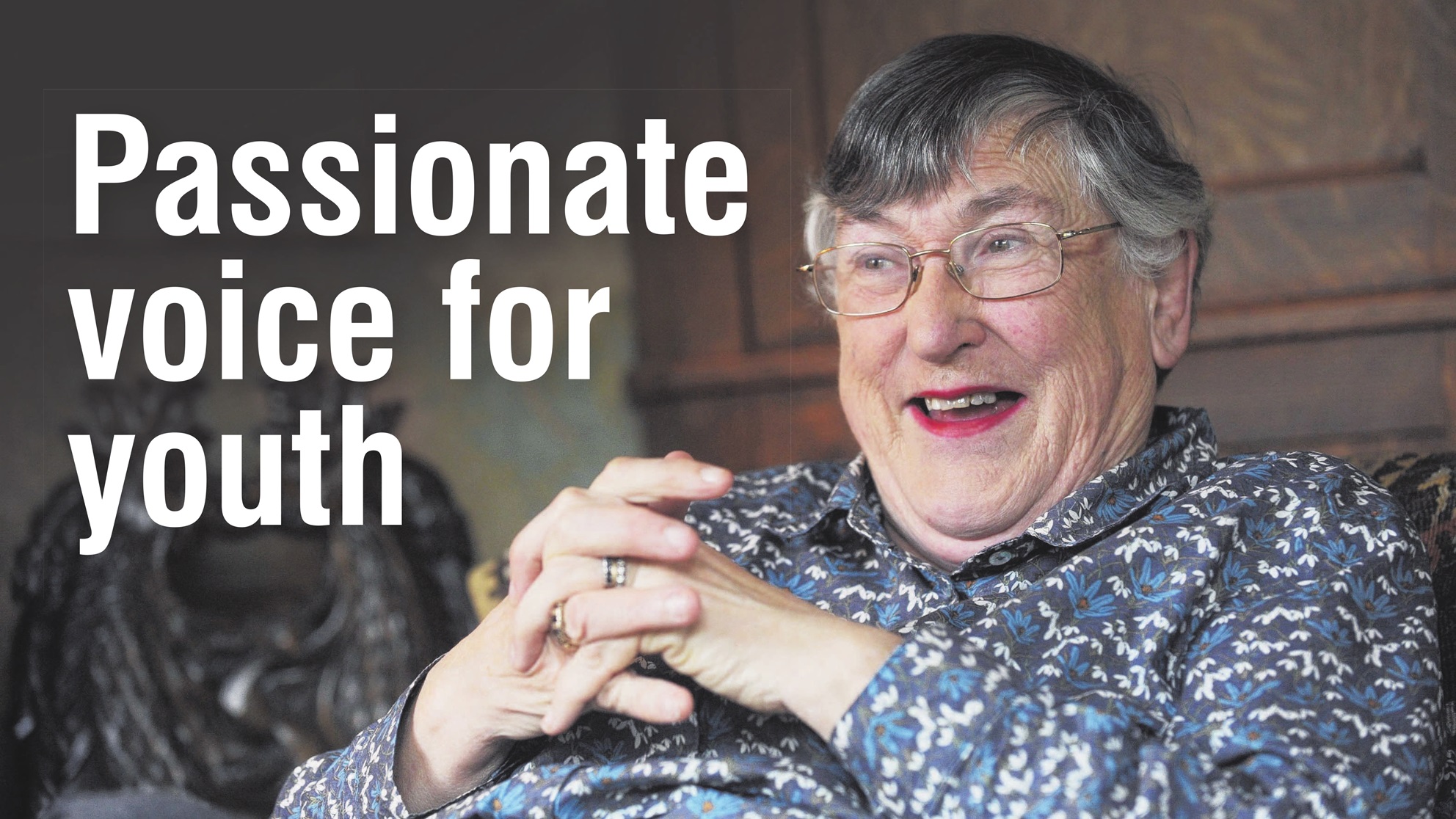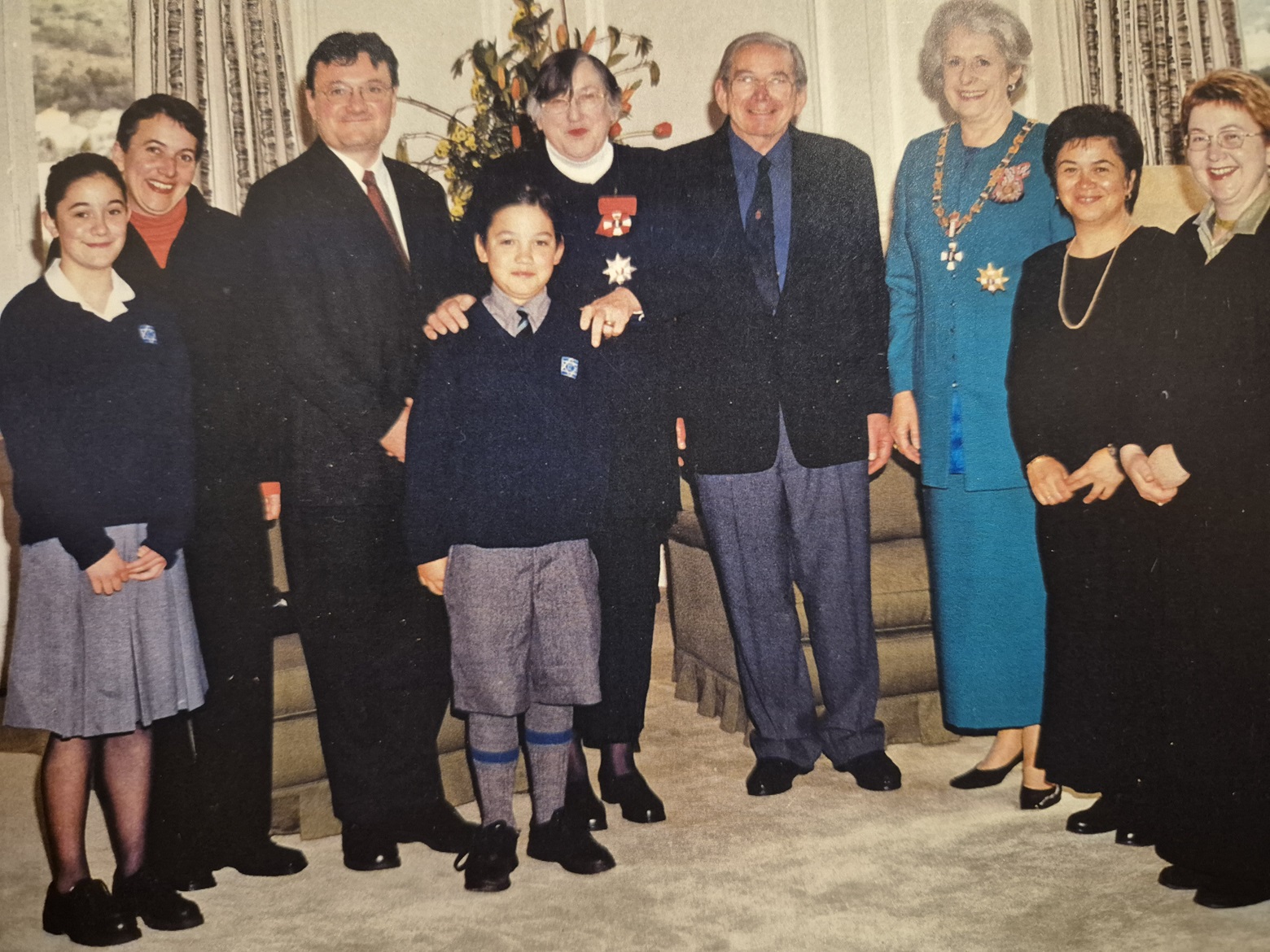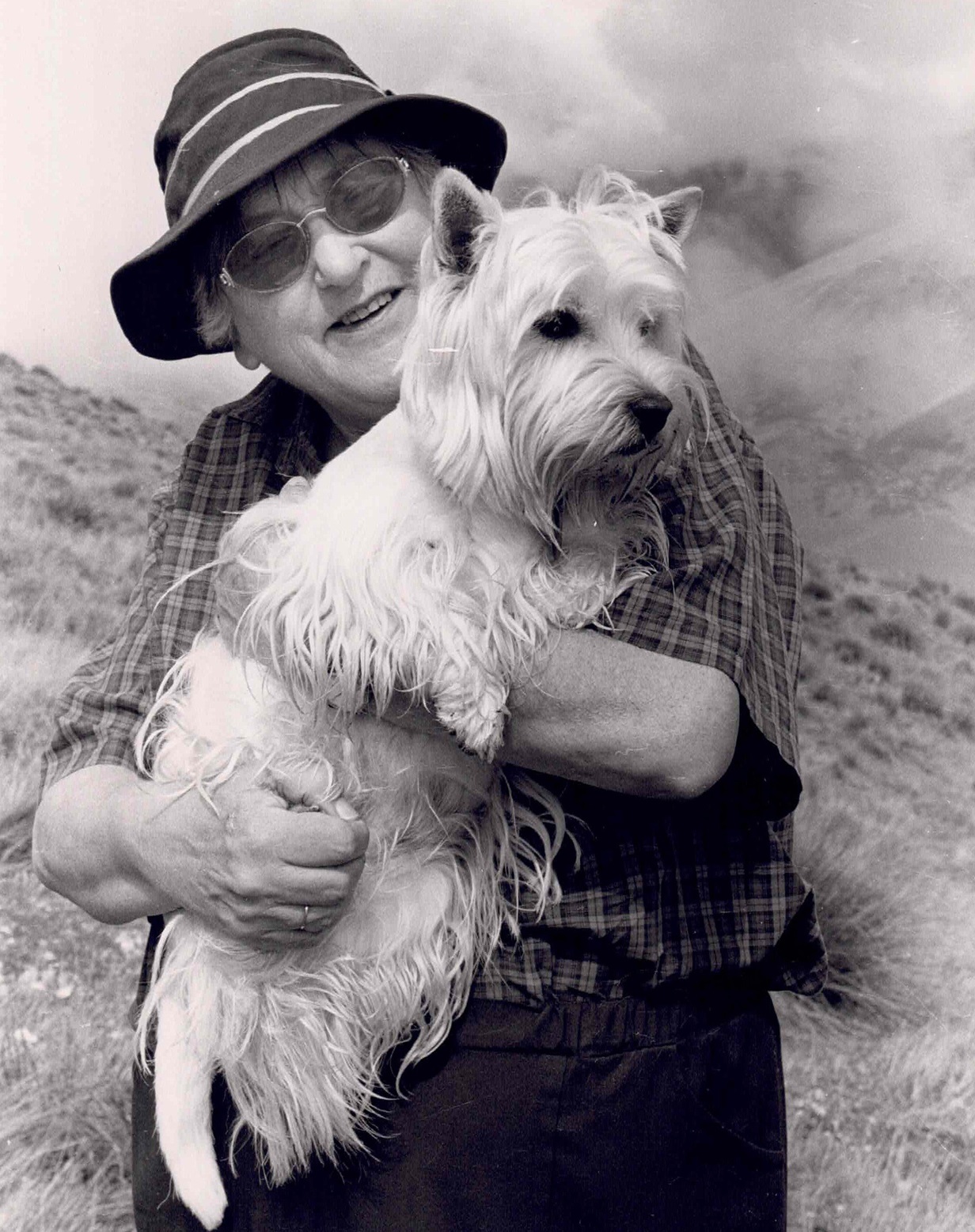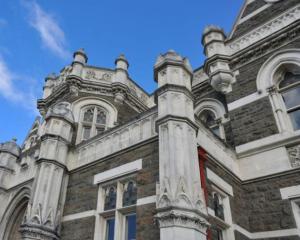
As Shakespeare once wrote: All the world’s a stage; And all the men and women merely players; They have their exits and their entrances; And one man in his time plays many parts.
As You Like It was Dame Pat Harrison’s favourite play, and like the opening lines in the monologue say, the admired and treasured educator played many parts in a lifetime filled with many entrances and exits.
Dame Pat was born in Dunedin on September 6, 1932, to Hugh and Catherine Thomson.
She was brought up in the bustling and close-knit Kaikorai Valley community, and from a very early age, she knew the value of a good education.
The foundations of her education philosophy
In an extract from her memoir, she said education meant a lot to "that valley".
"Parents had come through World War 1 and the Depression, and education was seen to open the doors to opportunity, suggesting hope for a better future.
"The school was even more important, since it was the time of the second World War, when kids needed security and stability and a routine to follow.
"Our bluestone school offered all of that, together with the sense of bountifulness.
"Apples were delivered in wooden boxes, and milk in crates arrived each morning to be drunk through straws at playtime.
"What did that say to us kids? It said that a school offered more than basic core learning.
"Its routines offered security and had a certain predictability. The milk and apples demonstrated that someone out there cared about our welfare.
"The rules were consistent, with a community code of behaviour. Going to a school was a respected, eventful activity."
Dame Pat said the valley’s residents supported each other, always lending a helping hand, and providing food and clothing to those in need.
"The valley had a degree of discreet generosity — never paraded, but carried out in a manner that demonstrated how things should be.
"On reflection, it seeped into the marrow of my bones like osmosis.
"It was an unwritten code, embedded in the community, and this was to influence greatly, my education philosophy."
It was the furnace that Dame Pat was moulded in, and it stayed with her for her whole life.
A time of experimentation
She was educated at Kaikorai Primary School, Otago Girls’ High School, and went on to study a master of arts (honours) at the Dunedin Teachers’ College and the University of Otago.
During this time, her love of drama prompted her to participate in a lot of amateur productions around the city, and it was there that she met her future husband, the late Keith Harrison.
The couple married in 1957 — the same year she graduated with her masters.
Dame Pat’s time at university and teachers’ college was a very experimental time, when there was a lot of thinking, discussion and debate about ideas — an environment she found mentally stimulating and very exciting.
Armed with these ideals, she went out into the workforce.
Her first teaching post was as a foundation staff member at the newly established Queen’s High School, in South Dunedin, where she taught English and drama.
The 1960s was a period of innovation and experimentation for her at Queen’s and she spent a great deal of time exploring new teaching methods and working out ways to engage students at every level so that none of them were left behind.
At a time when Shakespeare was taught by reading alone, she made the classes much more engaging by moving all the tables and chairs, and having the students dress up and act out scenes.
And her English classes were taught much like a home economics class — by gathering ingredients, mixing them, baking them, and finally, looking at the finished product.

She was a great believer in having laughter and spontaneity in her lessons.
Learning to lead
In 1973, she took up the head of English position at New Zealand’s largest secondary school — Burnside High School, in Christchurch.
She had 24 English teaching staff working for her, and it became an opportunity for her to expand her leadership skills.
She had an incredible ability to read people and situations.
She believed having diverse personalities among her teaching staff was as important as the subjects being taught.
Staff who were practical or creative or logical or dynamic or laid-back all played a part in forming the opinions of students, and created a better understanding of human nature.
Her teaching appointments reflected that. The emphasis was on shaping a good, literate and useful citizen.
Leading the way
Apart from her three years at Burnside High School, Dame Pat’s entire teaching career was spent at Queen’s, where she returned to serve as principal from 1975 to 1994.
During that time, she lead with a clear vision and an iron will.
One of her first actions as principal was fending off King’s High School, which wanted to amalgamate with Queen’s to make one big co-ed school.
She fought tooth and nail to keep Queen’s as Queen’s — which she achieved.
And in doing so, the many males in education at that time discovered the hard way that she was not a person to be trifled with.
She described Queen’s as a "living organism" and wanted the school to play a bigger part in the wider community.
So she implemented the Forbury After School Programme where identified Forbury Primary School pupils who were neglected and had no parental supervision were paired up with senior Queen’s High School students, who mentored them.
Dame Pat herself was also very active across the education sector and the community, working with the Workers’ Education Association, helping with YWCA activities, Sunday School and speech competitions.
One of her more innovative projects was to form a parents’ association at the school — something that is common place in today’s schools.
She saw a need for parents to have a lot more engagement in the school, particularly to help address absenteeism and truancy, which was a major factor at the time.
She was also a big promoter of animals in schools.
They had a rabbit, Murtle the turtle, and dogs — lots of dogs. She and fellow staff members brought their dogs to school because she believed animals would "humanise" the learning environment.
It taught the students to care about and understand animals as well as other people’s perspectives.
Dame Pat also established a creche on school grounds, initially for the staff’s children.
But she later extended it to students who wanted a second chance at education and expanded the school’s vocational opportunities so students could get part-time work experience off-site while still studying at school.
She also did a lot of work to engage the students in sciences and mathematics and worked hard with the ministry to make sure the school had all the classrooms and equipment it needed to make it happen.
By 1984 her leadership in education caught the attention of education authorities and she was awarded a Woolf Fisher Fellowship for leading secondary teachers and principals.
She spent three months visiting schools in Scotland, England, Sweden and the United States, and gathered a lot of initiatives to develop New Zealand’s education system.
When she got back she shared a lot of what she had seen with numerous politicians and encouraged them to establish the initiatives in New Zealand schools.

She knew that real change was possible — in part through force of personality and in part through the ability to influence the right person at the right time.
The champion of young women
Dame Pat once wrote: "Hold firm to the principle of equity, that every girl has an equal right to a satisfying future".
If you were one of Dame Pat’s students the one thing you could be sure of was that she believed you could be, and would be, successful in life.
She was a champion of young women.
She was not just the principal of Queen’s High School, she was a beacon of hope and a steadfast advocate for the education and wellbeing of young women.
Her impassioned speeches during school assemblies often culminated in a rallying cry: "Girls can do anything".
She inspired countless students to reach for the stars.
As well as a prodigious intellect she had a remarkable memory.
She knew each and every pupil by their full name and when past students would introduce themselves to her in the community she would remember something about them or their family.
Dame Pat loved those interactions. And past and present students loved the interactions too because it showed she genuinely cared about their education and their growth.
After school
In her retirement she continued working with young people in Dunedin, helping the vulnerable and those who dropped out of formal education via programmes run by various community organisations.
One of them was the Otago Youth Wellness Trust which she founded in 1996.
The creation of the trust was inspired by her quest to create a safety net in the Dunedin community which was secure enough to withstand the abuse, neglect and deprivation faced by many young people in the city and lift them out of poverty.
Her dream was to create a community-based service where young people worked with police, educators, health practitioners, families, social service providers and whoever else was needed so that each individual young person would have an opportunity to get their "ticket into the wonderful carnival of life", as she put it.
She also spent much of her time in community roles, including as a member of the University of Otago Council from 1983 to 1994; an Otago regional councillor; as an executive member of the Dunedin Council of Social Services; as chairwoman of the Otago Regional Access Employment Council; and was involved in various theatre companies around the city.
The greatest reward
Dame Pat never sought reward for her efforts.
For her the greatest reward was seeing her students go on to achieve success in life.
But it was inevitable that she would be honoured for her world-changing actions.
In the 1987 Queen’s Birthday Honours, she was appointed a Companion of the Queen’s Service Order for public services.
She also received the New Zealand 1990 Commemoration Medal, and in 1993 she was awarded the New Zealand Suffrage Centennial Medal.
In 2001, she was made a Distinguished Companion of the New Zealand Order of Merit, for services to education and the community; and in the 2009 Queen’s Birthday Honours she accepted redesignation as a Dame Companion of the New Zealand Order of Merit.
Dame Pat’s passion for young people was such, that her involvement in the community and the school, continued right up until the week she died.
Her legacy is etched into the very fabric of Queen’s High School, and the lives of every student and teacher she ever touched.
Just as in Shakespeare’s play, Dame Pat made her final exit on September 6, 2025, and died on her 93rd birthday.
She is survived by her son Richard, daughters Katie and Lizzy, and her grandchildren and great-grandchildren.











